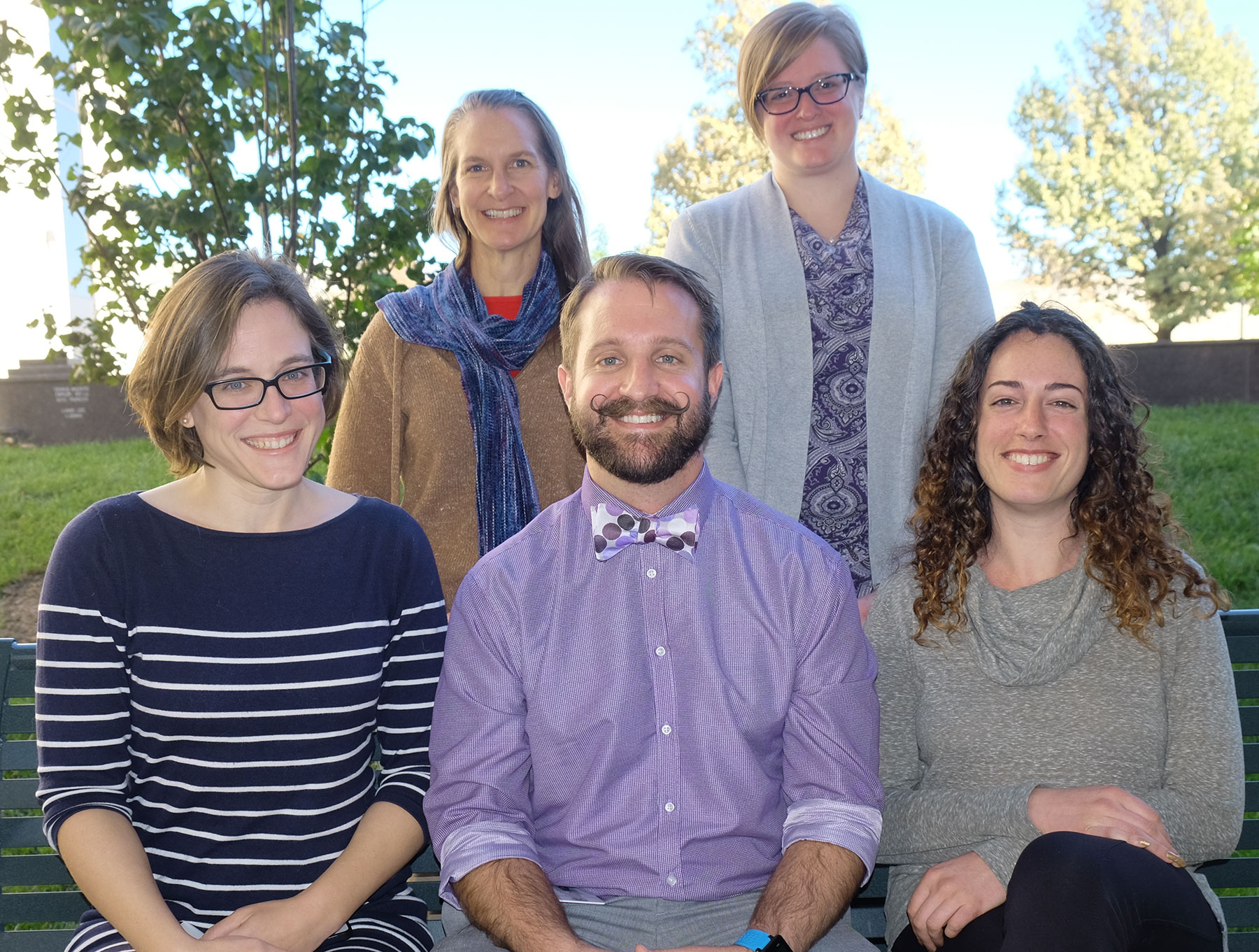
November 2017
KSVDL Welcomes Five New Members to the Diagnostic Team

From left to right: Drs. Sarah Schneider, Cindy Bell, Brian Herrin, Nora Springer and Diana Schwartz.
The Kansas State Veterinary Diagnostic Laboratory (KSVDL) is announcing the addition of a “Fab Five” to its diagnostic team.
Four pathologists and one parasitologist have been hired in recent months to help expand the services provided by the lab.
“This is a diverse group that will ultimately help us shorten turnaround time as well develop new tests and protocols in both pathology and parasitology,” said Dr. Jamie Henningson, interim director of the lab.
Additionally, their knowledge base and enthusiasm will help KSVDL grow into new areas of diagnostic medicine.
The new faculty are:
-
Dr. Sarah Schneider, an anatomic pathologist, who attended veterinary college at the University of Tennessee. She then practiced small animal medicine in Beaufort, South Carolina, for three years before returning to a residency in anatomic pathology at Texas A&M University. Dr. Schnieder was board certified in anatomic pathology in 2013, and continued teaching on the necropsy service at Texas A&M while pursuing a doctorate focused on cardiomyopathy in the golden retriever model of muscular dystrophy.
-
Dr. Cindy Bell, an anatomic pathologist, who grew up in hog and corn country in northwestern Illinois. She said she found veterinary medicine to be the ideal intersection for someone with a brain for biology and a heart for promoting healthy rural economies. As an anatomic pathologist, Dr. Bell spent five years at the Wisconsin Veterinary Diagnostic Laboratory where dairy cattle constituted the majority of case work. She also augments her credentials as a poultry pathologist and has distinguished herself in veterinary oral/dental pathology. She is currently faculty supervisor of the KSVDL histology and immunohistochemistry laboratory.
-
Dr. Brian Herrin, a parasitologist, is originally from Lindsay, Oklahoma, and has completed both his Doctor of Veterinary Medicine and doctorate at Oklahoma State University. While his current research focus is on the epidemiology of Lyme borreliosis in humans and dogs in North America, he is also interested in the evaluation of diagnostic assays for tick-borne diseases and surveillance of ticks and tick-borne diseases from horses. Dr. Herrin said he enjoys working with all parasites of veterinary importance through the diagnostic service and teaching/outreach opportunities. He is currently overseeing the KSVDL parasitology laboratory and has already made a change to improve antigen detection in heartworm testing.
-
Dr. Nora Springer, a clinical pathologist, is a 2008 graduate of the Kansas State University College of Veterinary Medicine. She subsequently completed residency training in veterinary clinical pathology and a doctorate in comparative oncology and translational medicine, both at Cornell University. Dr. Springer's clinical and research interests are focused on hematopathology and hematopoietic neoplasia, particularly lymphoma and acute leukemias.
-
Dr. Diana Schwartz, a clinical pathologist, earned her Doctor of Veterinary Medicine from the University of Minnesota in 2013. She then participated in a clinical rotating small animal internship at the Sacramento Veterinary Referral Center prior to completing a residency in clinical pathology at the University of California, Davis. Dr. Schwartz’s main focus is on diagnostic service, with particular areas of interest including acute phase proteins and central nervous system neoplasia in dogs and cats. She recently, August 2017, passed the American College of Veterinary Pathologists board examination for clinical pathology.
A Possible Fallacy of Anaplasmosis Control: The Concept of "Endemic Stability"
Return to Index